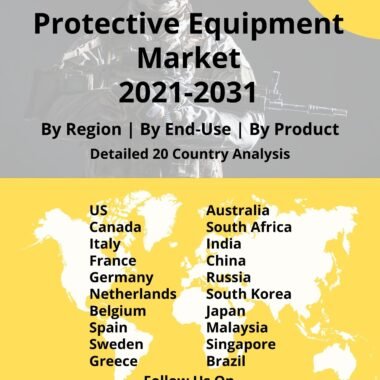Description
CubSat Small Satellite Market
Frequently Asked Questions of CubSat Small Satellite Market
CubeSats are standardized, miniature satellites that have become increasingly popular in space exploration, research, and educational projects. They are typically cube-shaped, with each side measuring 10 centimeters (about 4 inches) and a maximum weight of 1.33 kilograms (2.93 pounds). The CubeSat standard allows for easy integration, low-cost development, and rapid deployment of these small satellites.
CubeSats are designed with a standardized form factor to ensure compatibility and ease of integration. The basic unit is a 1U CubeSat, which is a cube measuring 10x10x10 centimeters (about 4x4x4 inches) and weighing up to 1.33 kilograms (2.93 pounds). Larger CubeSat configurations, such as 2U, 3U, 6U, and 12U, can be formed by combining multiple 1U units. CubeSats offer a relatively low-cost approach to satellite development compared to traditional large-scale satellites. The standardized design and off-the-shelf components simplify the manufacturing process and reduce development costs. This affordability has opened opportunities for universities, research institutions, and small companies to participate in space missions and conduct experiments in space.
CubeSats have gained popularity in educational institutions as they provide hands-on experience for students in spacecraft design, integration, and operation. Many universities and colleges have developed CubeSat programs that allow students to design, build, and launch their own satellites. CubeSats also facilitate research in various fields such as Earth observation, astrophysics, atmospheric studies, technology demonstration, and space debris monitoring.
CubeSats are often deployed from larger spacecraft, such as the International Space Station (ISS) or dedicated deployers on rockets. Their small size and standardized form factor make them compatible with existing launch infrastructure. CubeSats can be deployed in groups, enabling multiple satellites to be launched and operate in constellations for coordinated missions or distributed observations. CubeSats have been involved in collaborative missions where multiple satellites from different organizations or countries work together to achieve a common scientific or research objective. These collaborations foster international cooperation, sharing of resources and expertise, and cost-sharing in space exploration and research endeavors.
Major factors driving CubSat Small Satellite Market Growth
The CubeSat market has seen the emergence of specialized service providers that offer end-to-end CubeSat solutions, including design, manufacturing, integration, launch coordination, and data services. These service providers simplify the process of developing and operating CubeSats, further driving market growth by providing comprehensive support to customers.
Collaborative missions and CubeSat constellations have gained traction in recent years. Multiple CubeSats from different organizations or countries work together to achieve common scientific or research goals. These collaborative efforts foster international cooperation, resource sharing, and cost optimization, driving market growth as more organizations participate in joint CubeSat missions.
Trends Influencing the CubSat-Small Satellite Market Size
CubeSats provide an ideal platform for testing and demonstrating new technologies and payloads in space. Many companies and organizations are leveraging CubeSats to showcase innovative solutions, validate new concepts, and gather valuable data. The ability to quickly launch and iterate on technology demonstrations has attracted interest from various industries, including telecommunications, Earth observation, and remote sensing.
CubSat-Small Satellite Market Forecast & Dynamics
CubeSats have democratized access to space and enabled a wide range of scientific, educational, and technological opportunities. They have revolutionized the way small satellites are developed, launched, and operated, making space exploration and research more accessible to a broader community. The CubeSat standard continues to evolve, with ongoing advancements in technology and increasing interest in their applications across various industries. The market forecast encompasses a thorough market analysis and assessment of market size. The analysis comprises an evaluation of regional market size, factors driving growth, constraints, and potential opportunities. Furthermore, the regional analysis also includes an examination of CubSat-Small Satellite the market size specific to each country.
CubSat Small Satellite Market Analysis for Recent Developments
Following an open call and selection by ESA, seven CubeSat missions demonstrating a variety of services including as connectivity and secure communications are being created by small and medium-sized businesses and universities in Greece. As part of the nation’s EU-funded Recovery and Resilience Facility, the initiative underpins efforts led by ESA on behalf of the Greek Ministry of Digital Governance to expand Greece’s nascent space industry, enabling digital transformation of society while creating jobs and generating prosperity. In answer to European and national needs, the seven CubeSat missions will demonstrate Greece’s ability to host multiple payloads. The missions are primarily concerned with secure connectivity, although they also provide multifunctional services such as telecommunications and Earth observation. NASA has given SpaceX the job of launching two CubeSat missions under the agency’s Venture-class Acquisition of Dedicated and Rideshare (VADR) launch services contract.
SpaceX will be responsible for launching the CubeSats on a Falcon 9 rocket as part of the deal, with a projected launch window of no earlier than 2025. The agency will release detailed payload parameters closer to the launch date. The VADR launch services contract is managed by NASA’s Launch Services Programme, which is situated at the Kennedy Space Centre in Florida. It provides commercial launch services for payloads that can withstand greater risk. The contract reduces launch costs and increases flexibility for mission planners by utilizing a lower degree of mission assurance and incorporating commercial best practices.
The global landscape of CubeSat (Cube Satellite) technology has seen remarkable advancements, playing a pivotal role in space exploration, Earth observation, and scientific research. CubeSats, miniature satellites with standardized dimensions, have become increasingly popular due to their cost-effectiveness, quick development cycles, and versatility. Advancements in miniaturized components, sensors, and propulsion systems have enhanced the capabilities of CubeSats. These small satellites now contribute to a wide range of missions, including Earth imaging, climate monitoring, technology demonstrations, and scientific experiments in space.
The global deployment of CubeSats has expanded, involving collaborations between space agencies, educational institutions, and private companies. This democratization of space technology allows smaller entities to participate in space exploration and scientific endeavors. In 2023, CubeSats are frequently used in constellations, forming networks of interconnected satellites for improved data collection and coverage. Their small size and modular design make CubeSats adaptable to various mission requirements, facilitating innovative approaches to space exploration. The ongoing developments in CubeSat technology represent a significant shift in space exploration paradigms, fostering a more inclusive and diverse landscape for scientific discovery and technological innovation.





